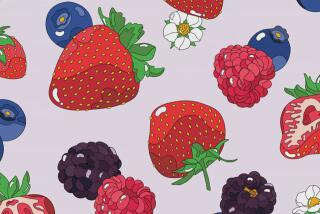Superlative benefits claimed
Superfruits wax and wane in supremacy. Most are exotic, at least to us: For all we know, they may be the prosaic apples and pears of the lands from which they hail. Some studies of superfruit extracts — for the most part in lab dishes — suggest they can do things like impede the growth of cancer cells or tamp down inflammation. Marketing departments make far bolder claims.
A sampling from the superfruit bowl:
Goji berry: Also known as wolfberry, this superfruit is actually a couple of closely related species native to southeast Europe and China. The fruits were dubbed “Duke of Argyll’s tea tree” in England after introduction there in the 1730s by (you guessed it) the Duke of Argyll. “Goji” is a relatively new name for these fruits, which look a tad like cherry tomatoes. Perhaps that’s no surprise — they are in the same plant family as tomatoes, potatoes and nightshade.
Mangosteen: Botanists aren’t sure where Garcinia mangostana L originally came from, though they suspect the tree hails from the Sunda Islands and the Moluccas of Indonesia. Mangosteen is grown extensively in Southeast Asia, and the fruit has a thick rind that has traditionally been made into tea to treat conditions such as diarrhea and bladder infections. The flesh inside is eaten just as fruit.
Baobab: If you’ve seen the animated movie “Madagascar,” you’re familiar with the oddly fat-trunked baobab tree. Six of the eight species are unique to that island, but the fruit being incorporated into health foods and drinks comes from Adansonia digitata, which grows widely in sub-Saharan Africa. In 2009, pulp from its 6-to-8-inch-long fruit was granted “generally recognized as safe” status by the Food and Drug Administration. An interesting baobab fact: The tree is pollinated by bats.
Maqui berry: Promoters of this fruit, from the Patagonia region of South America, might win a prize if we were awarding one for hyperbole: Maqui, we read at retailer Herbal Powers, for example, is “a deeply purpled berry like no other berry before” that “thrives in a harsh climate where few would survive” and is consumed by the Mapuche, “the only unconquered Native American Indians in the entire America continent,” whose “legendary strength and stamina are largely contributed by drinking a fermented maqui drinks several times daily.”
Acai: Don’t know how to pronounce its name? You can listen to it at https://www.acai-health.org/acai.mp3. It’s the fruit of a palm tree that grows in Central and South America. The fruits make up a large portion — as much as 42% by weight — of the diet of some who live in the Amazon rain forest in Brazil. In a small study, blood sugar and total cholesterol levels fell in 10 obese adults eating acai pulp.
More to Read
Eat your way across L.A.
Get our weekly Tasting Notes newsletter for reviews, news and more.
You may occasionally receive promotional content from the Los Angeles Times.










